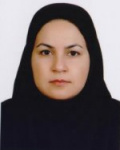| نویسندگان | جواد حسین زاده ساداتی-محسن جاوری-مجید منتظر ظهوری-علی بنی طبا-رضا نوری شادمهانی-لیلا مکوندی-ارکادیوش سولتشیاگ |
|---|
| تاریخ انتشار | 2017-10-01 |
|---|
| نوع نشریه | الکترونیکی |
|---|
| نمایه نشریه | ISI |
|---|
چکیده مقاله
At the onset of the Iron Age, after c. 1200 BC, Iran was a place of major social
transformation. After the collapse of the Bronze Age urban civilisations, the land was
inhabited mainly by groups of mobile pastoralists that gradually transitioned from tribal
organisation into loose federations, before finally developing into the Median and Persian
early states (Potts 2014). This transition is still poorly recognised, as settlement sites from
this period are scarce and most evidence is from cemeteries that were excavated many
decades ago. Here we report results of excavations at a recently discovered cemetery that
may provide new insights into the social complexity and cultural affinities of Iron Age
nomads in Iran.
